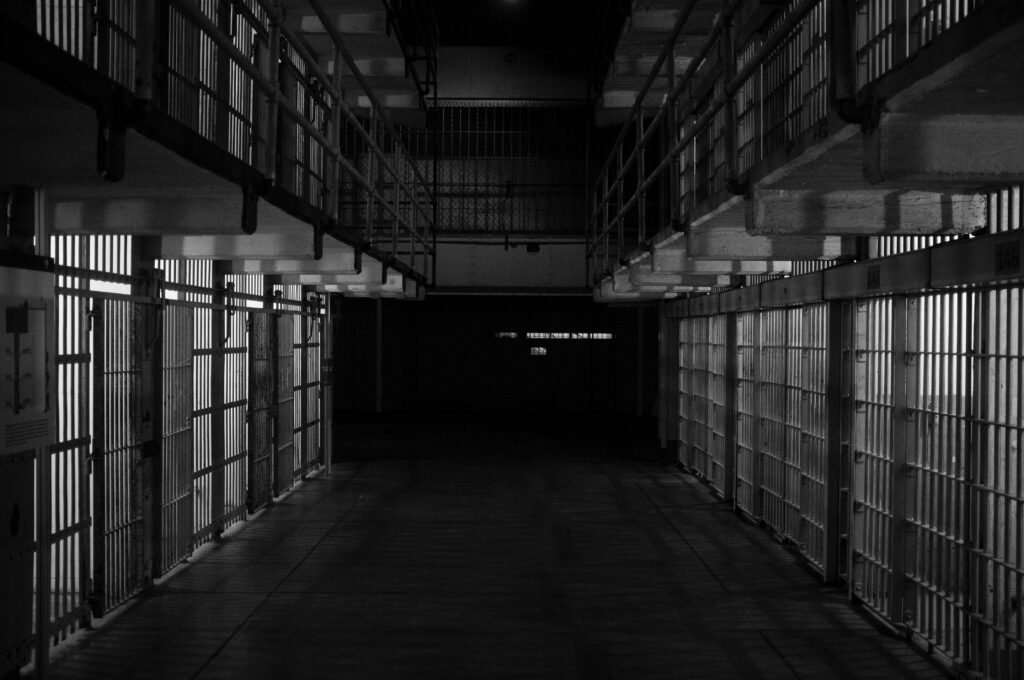By Maeve Hickey
On March 21, 2024, the United States Department of Justice (“DOJ”) and sixteen states sued Apple, claiming the company has monopolized or attempted to monopolize smartphone markets.[1] The suit is the latest in a series of antitrust actions against the “Big Tech giants.”[2] The Federal Trade Commission has spearheaded enforcement efforts against Meta and Amazon, while the DOJ has taken on Google and Apple.[3] In addition to two state-law claims, the Complaint against Apple brings four claims under Section 2 of the Sherman Act, which prohibits “monopoliz[ing], or attempt[ing] to monopolize” a particular market.[4] The Complaint defines two relevant markets: the smartphone market as a whole and the narrower “performance smartphone” market of upscale, more expensive devices.[5]
The Walls Around the iPhone
Many of the allegedly monopolizing practices at issue involve Apple’s cultivation of a walled garden with one market for applications (the App Store),[6] one digital wallet (Apple Pay),[7] smartwatches (Apple Watches) that only pair with one type of phone (iPhones),[8] and a messaging platform (iMessage) only available on Apple devices.[9] A walled garden is a closed system of products or services over which a single entity—here, Apple—maintains significant control.[10] Within the walled garden, “[e]verything plays well together,” but users can encounter obstacles when they purchase non-Apple devices, or even when they communicate with someone outside of Apple’s system.[11] The DOJ argues that these difficulties are a feature, not a bug, pointing to an Apple executive’s statement that the company’s long-held control over iMessage stops “iPhone families giving their kids Android phones.”[12]
Walled gardens are referred to as gardens and not prisons for a reason: many of their qualities are attractive to users.[13] According to Apple, the suit punishes it for making “products that work seamlessly together, protect people’s privacy and security, and create a magical experience for [its] users.”[14] Even in a model as successful as Apple’s, “the ‘walled garden’ approach, without more, is not illegal.” [15] The real question is whether Apple’s restrictions on interoperability amount to monopolizing practices.[16]
Privacy and Competition
Apple has increasingly marketed itself as a leader in consumer privacy.[17] It is easy to grasp Apple’s theory that opening up the iPhone to third-party digital wallets might create an opportunity for fraudulent transactions, or that funneling all apps through the App Store helps prevent malware.[18] Counsel for Apple made this argument in a separate antitrust case brought by Epic Games, maintaining that the App Store stops “fraudsters” and “hackers” from reaching users.[19] Counsel for Epic argued that “the only thing that is kept out by Apple’s walled garden is competitors.”[20]
If the DOJ establishes its prima facie case that Apple’s tactics amount to monopolization, the theory that these same tactics protect consumer privacy is not enough on its own. The Supreme Court has held that courts “cannot indirectly protect the public . . . by conferring monopoly privileges on [a company].”[21] The Sherman Act “precludes inquiry into . . . whether competition is good or bad.”[22] Its underlying policy is singular: promotion of competition.[23] Therefore, litigants cannot obtain “special dispensation from the Sherman Act” by arguing that a monopolistic practice provides some other societal benefit.[24]
Instead of pitting privacy against competition, Apple will have to confront the allegations of monopolization head-on.[25] Where tactics leading to a monopoly are not unreasonable per se, courts employ the rule of reason, a “three-part burden-shifting test” where a plaintiff must first prove that the defendant’s conduct has had a “‘substantial anticompetitive effect that harms consumers in the relevant market.’”[26] The defendant then has the burden of producing a “procompetitive justification for its conduct,” which can include reasons like “enhanced consumer appeal.”[27] Finally, the plaintiff must either rebut the justification or “demonstrate that the anticompetitive harm . . . outweighs the procompetitive benefit.”[28]
Antitrust scholars largely agree that the government has an uphill battle in establishing that Apple’s tactics were anticompetitive rather than merely successful.[29] By making privacy a part of its brand,[30] Apple has positioned itself favorably to argue that its tactics help it appeal to consumers in a competitive marketplace. As a result, the case may hinge on the final step of the rule-of-reason analysis: whether the DOJ can establish that Apple’s grip on smartphone markets is more anticompetitive than procompetitive. While the case will likely take several years, it still may put pressure on Apple to reduce barriers to interoperability so that the company can position itself more favorably for settlement or trial.
Finally, other tech companies are on notice that Apple’s business model has drawn scrutiny. Some of them have already been advocating for courts to rein in Apple’s dominance.[31] Whatever its outcome, United States v. Apple will likely influence how other tech companies decide to structure their own walled gardens—and how much boxing in of customers is too much.
[1] Press Release, Dep’t Just. Off. Pub. Affs., Justice Department Sues Apple for Monopolizing Smartphone Markets (Mar. 1, 2024), https://www.justice.gov/opa/pr/justice-department-sues-apple-monopolizing-smartphone-markets.
[2] Bryan Koenig & Stewart Bishop, DOJ Sues Apple, Rounds Out US Claims Against Tech Big 4, Law360 (Mar. 21, 2024, 10:52 AM EDT), https://www.law360.com/competition/articles/1805422/doj-sues-apple-rounds-out-us-claims-against-tech-big-4.
[3] Id.
[4] Compl. at 71–76, United States v. Apple, No. 2:24-CV-04055 (D.N.J. Mar. 21, 2024), ECF No. 1 (hereinafter “Complaint”); 15 U.S.C. § 2.
[5] Complaint ¶¶ 165, 172.
[6] Id. ¶ 41.
[7] Id. ¶ 11.
[8] Id. ¶ 96.
[9] Id. ¶¶ 80, 91.
[10] See Michael H. Wolk, The iPhone Jailbreaking Exemption and the Issue of Openness, 19 Cornell J.L. & Pub. Pol’y 795, 797 (2010).
[11] Joanna Stern, iPhone? AirPods? MacBook? You Live in Apple’s World. Here’s What You Are Missing., Wall St. J. (June 4, 2021, 10:40 AM ET), https://www.wsj.com/articles/iphone-airpods-macbook-you-live-in-apples-world-heres-what-you-are-missing-11622817653.
[12] Complaint ¶¶ 80, 91.
[13] See Stern, supra note 11.
[14] Michael Liedtke et al., Justice Department sues Apple, alleging it illegally monopolized the smartphone market, Assoc. Press (Mar. 21, 2024, 4:12 PM EDT), https://apnews.com/article/apple-antitrust-monopoly-app-store-justice-department-822d7e8f5cf53a2636795fcc33ee1fc3.
[15] Apple iPod iTunes Antitrust Litig., No. 05-CV-0037, 2014 WL 12719194, at *3 (N.D. Cal. Nov. 25, 2014).
[16] See Mark A. Lemley, The Splinternet, 70 Duke L.J. 1397, 1424 (2021).
[17] See, e.g., Apple, Privacy on iPhone | Data Auction | Apple, YouTube (May 18, 2022), https://youtu.be/NOXK4EVFmJY?feature=shared; Press Release, Apple, Apple builds on privacy commitment by unveiling new education and awareness efforts on Data Privacy Day (Jan. 24, 2023), https://www.apple.com/newsroom/2023/01/apple-builds-on-privacy-commitment-by-unveiling-new-efforts-on-data-privacy-day/.
[18] Liedtke et al., Justice Department sues Apple, supra note 14.
[19] See Michael Liedtke, Battle over the iPhone app store spills into appeals court, Assoc. Press (Nov. 14, 2022, 7:56 PM EDT), https://apnews.com/article/technology-business-apple-inc-games-c5fcfcc748398aa2f56586256711b0b9. Unlike the DOJ’s case, which focuses on smartphone markets, Epic’s case targets the App Store. Id.
[20] Id.
[21] Nat’l Soc’y Pro. Eng’rs v. United States, 435 U.S. 679, 695–96 (1978).
[22] Id. at 695.
[23] See Erika M. Douglas, Data Privacy as a Procompetitive Justification: Antitrust Law and Economic Analysis, 97 Notre Dame L. Rev. Reflection 430 (2022).
[24] Nat’l Collegiate Athletic Ass’n v. Alston, 594 U.S. 69, 94–95 (2021).
[25] Douglas, supra note 23, at 465 (explaining that the “social value of data privacy does not render its protection an antitrust concern under existing law.”).
[26] FTC v. Qualcomm Inc., 969 F.3d 974, 989, 991 (9th Cir. 2020) (quoting Ohio v. Am. Express Co., 585 U.S. 529, 541 (2018)).
[27] United States v. Microsoft Corp., 253 F.3d 34, 59 (D.C. Cir. 2001) (internal quotation marks omitted).
[28] Id.
[29] See Daniel A. Crane, Ranking the Big Tech Monopolization Cases, Yale J. on Regul: Notice & Comment (Mar. 26, 2024), https://www.yalejreg.com/nc/ranking-the-big-tech-monopolization-cases-by-daniel-a-crane/; Alex Keenan, ‘Apple will prevail’: US faces uphill slog in new antitrust battle, Yahoo! Finance (Mar. 27, 2024), https://finance.yahoo.com/news/apple-will-prevail-us-faces-uphill-slog-in-new-antitrust-battle-080027800.html.
[30] See supra note 17.
[31] See Dorothy Atkins, Microsoft, Others Can Weigh In On Epic, Apple App Store Row, Law360 (Apr. 5, 2024, 6:39 PM EDT), https://www.law360.com/articles/1822267/microsoft-others-can-weigh-in-on-epic-apple-app-store-row (discussing motions by Microsoft Corp., X Corp., Spotify USA, Inc., and others to file amicus briefs in Epic’s suit against Apple).



